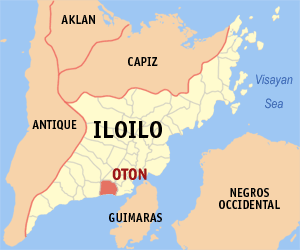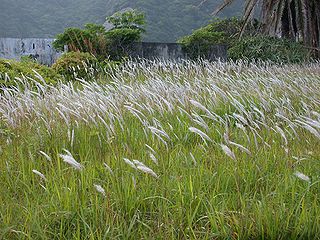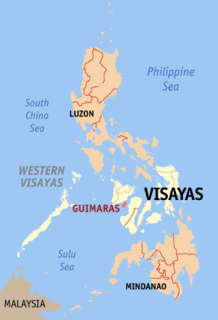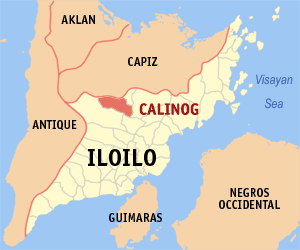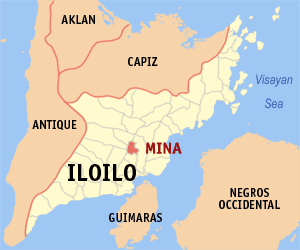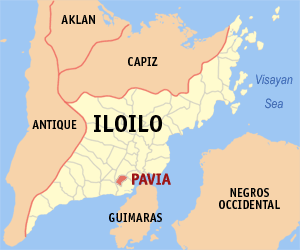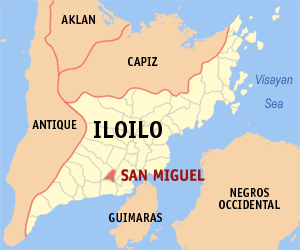Alimodian | |
|---|---|
| Municipality of Alimodian | |
 Aerial view of Alimodian | |
Nicknames:
| |
| Motto(s): Truth Always Prevails | |
 Map of Iloilo with Alimodian highlighted | |
Location within the Philippines | |
| Coordinates: 10°49′N122°26′E / 10.82°N 122.43°E Coordinates: 10°49′N122°26′E / 10.82°N 122.43°E | |
| Country | |
| Region | Western Visayas (Region VI) |
| Province | Iloilo |
| District | 2nd district of Iloilo |
| Founded | 1754 |
| Barangays | 51 (see Barangays) |
| Government | |
| • Type | Sangguniang Bayan |
| • Mayor | Geefre A. Alonsabe |
| • Electorate | 22,067 voters (2016) |
| Area | |
| • Total | 144.82 km2 (55.92 sq mi) |
| Population (2015 census) [3] | |
| • Total | 38,408 |
| • Density | 270/km2 (690/sq mi) |
| Time zone | UTC+8 (PST) |
| ZIP code | 5028 |
| PSGC | |
| IDD : area code | +63 (0)33 |
| Climate type | Tropical climate |
| Income class | 3rd municipal income class |
| Revenue (₱) | 101,434,942.78 (2016) |
| Native languages | Kinaray-a language Hiligaynon Tagalog |
| Website | www |
Alimodian, officially the Municipality of Alimodian, is a 3rd class municipality in the province of Iloilo, Philippines. According to the 2015 census, it has a population of 38,408 people (40, 176 in 2017). [3]

Iloilo is a province located in the region of Western Visayas in the Philippines. Iloilo occupies a major southeast portion of the Visayan island of Panay and is bordered by the province of Antique to the west, Capiz to the north, the Jintotolo Channel to the northeast, the Guimaras Strait to the east, and the Iloilo Strait and Panay Gulf to the southwest.

The Philippines, officially the Republic of the Philippines, is an archipelagic country in Southeast Asia. Situated in the western Pacific Ocean, it consists of about 7,641 islands that are categorized broadly under three main geographical divisions from north to south: Luzon, Visayas, and Mindanao. The capital city of the Philippines is Manila and the most populous city is Quezon City, both part of Metro Manila. Bounded by the South China Sea on the west, the Philippine Sea on the east and the Celebes Sea on the southwest, the Philippines shares maritime borders with Taiwan to the north, Vietnam to the west, Palau to the east, and Malaysia and Indonesia to the south.
Contents
- Etymology
- History
- Spanish colonial period
- American colonial period
- Japanese occupation and World War II
- Post-war reconstruction And developments
- Demographics
- Geography
- Climate
- Land Use
- Geographic division
- Economy
- Banking
- Energy
- Trade
- Communications
- Telecommunications
- Radio and television
- Newspaper
- Internet and connectivity
- Transportation
- Sports
- Culture
- Places of interest
- Local government
- List of Past Municipal Presidents and Mayors
- Notable people
- Alimodian firsts
- Further reading and viewing
- Books
- Video journals
- References
- External links
It has a total land area of 14,482 hectares (35,790 acres), [4] making up 2.89% of the provincial land area of Iloilo. It has some rugged terrains as well as ample flat lands for agriculture. Mountain range which serves as a natural boundary with other towns is located in the northern hinterlands of the town.
Nicknamed as the Banana Capital of Western Visayas, it produces not only the most harvest in Western Visayas but also the sweetest banana in the region. The town also boasts of producing corns, mangoes, root crops, sweet potatoes, legumes, bamboos, coconuts, as well as high yielding crops such as carrots, cauliflower, broccoli and strawberries thus the nickname Strawberry Capital of Iloilo as they produce substantial amount of strawberries in their strawberry farms.

Western Visayas is an administrative region in the Philippines, numerically designated as Region VI. It consists of six provinces and two highly urbanized cities. The regional center is Iloilo City. The region is dominated by the native speakers of four Visayan languages: Kinaray-a, Hiligaynon, Aklanon and Capiznon. The land area of the region is 20,794.18 km2 (8,028.68 sq mi), and with a population of 7,536,383 inhabitants, it is the most populous region in the Visayas.

A banana is an edible fruit – botanically a berry – produced by several kinds of large herbaceous flowering plants in the genus Musa. In some countries, bananas used for cooking may be called "plantains", distinguishing them from dessert bananas. The fruit is variable in size, color, and firmness, but is usually elongated and curved, with soft flesh rich in starch covered with a rind, which may be green, yellow, red, purple, or brown when ripe. The fruits grow in clusters hanging from the top of the plant. Almost all modern edible seedless (parthenocarp) bananas come from two wild species – Musa acuminata and Musa balbisiana. The scientific names of most cultivated bananas are Musa acuminata, Musa balbisiana, and Musa × paradisiaca for the hybrid Musa acuminata × M. balbisiana, depending on their genomic constitution. The old scientific name Musa sapientum is no longer used.

Maize, also known as corn, is a cereal grain first domesticated by indigenous peoples in southern Mexico about 10,000 years ago. The leafy stalk of the plant produces pollen inflorescences and separate ovuliferous inflorescences called ears that yield kernels or seeds, which are fruits.





